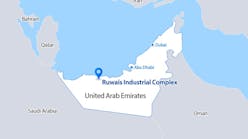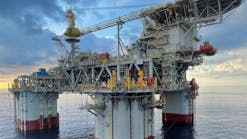Ben Rose and Robert Driver,
Norton Rose Fulbright (Asia) LLP
Lenders and charterers often negotiate agreements intended to keep the charter and therefore the cash flow alive.
While the shipping industry has suffered a torrid few years, the offshore sector has continued to grow as rising demand for oil and depleting reserves have resulted in a huge increase in offshore oil and gas exploration. At present more than a third of oil is being produced offshore and FPSOs are the preferred production solution.
Historically, Asia has been a small player on the global offshore production stage. Asian countries have traditionally relied on foreign imports of oil and gas. Over recent years, however, the region has sought to lessen its dependence on foreign imports and become more energy independent. Numerous offshore fields have been developed in jurisdictions including Malaysia, Indonesia, Vietnam, and Thailand, and there is currently activity in deeper and more remote waters around the Philippines and Myanmar. According to a recent report by Infield Systems, Asia will have the second-highest investment in offshore capex in the world over the next five years, behind only Africa.
Excluding Japan, the Asian center for offshore financing is Singapore. In this article we will examine what factors are important when assessing the bankability of an offshore project.
Project finance solutions
Ships are generally financed on the basis of their asset value. This means that the amount of the loan will be linked to the value of the ship it is financing. Lenders know that if the borrower is unable to repay its loan, they can step in and sell the asset in order to repay the loan. One of the reasons for the unavailability of bank lending for ships is the collapse in asset values.
With the amount of the loan being linked to the present value of the minimum cashflow for the period of the offtake contract (ignoring optional extensions) rather than being asset financed, an FPSO is generally project financed. Although lenders will normally take a mortgage over the asset itself this is of questionable practical value. If a borrower in a ship financing defaults, the lenders can arrest the vessel in a lender friendly jurisdiction such as Singapore.
The fact that an FPSO spends most of its working life at sea, outside territorial waters, means that practically enforcing the mortgage may be difficult. Conventional ships can be intercepted and arrested by a mortgagee in order to arrange a court sale when they are in port or within territorial waters, but FPSOs hardly ever visit port. Even if taking possession is legally possible, the practicalities of taking possession of a big, dangerous piece of equipment miles out at sea may be daunting.
Even if it is territorial waters FPSOs are often located in difficult jurisdictions, such as West Africa or, in Asia, Indonesia, or Vietnam, where direct enforcement action through the courts could be difficult.
Whilst lenders may have a security package that gives them the ability to move the FPSO to a more favorable jurisdiction in reality a country may see the FPSO as critical to its oil and gas supply whilst the oil company itself is unlikely to want the FPSO relocated and the charter terminated if it is complying with its own obligations under the charter. Moreover, exercising such rights may well be constrained by local law and/or contractual quiet enjoyment arrangements with the charterer.
Moreover, even if the FPSO can be moved to a favorable jurisdiction and sold through the courts, there is not a ready second-hand market for FPSOs in the same way as there is for traditional ships. Hence, there is uncertainty as to any valuation and they are not something which lenders can comfortably reply upon.
The lease contract between owner and charterer provides the income stream that underpins any FPSO financing and it is the strength of this lease contract which determines whether or not an FPSO project, absent corporate support, is bankable.
What makes a lease bankable? Identity of the counterparty
Lenders will look at the creditworthiness of the charterer and any charter guarantees. Often charterers enter into the charter as agent for members of the consortium which has the rights to extract the oil. In that case, each consortium member would generally be severally liable rather than jointly and severally and so lenders look at the credit, not just of the named charterer but all the consortium members.
In some cases the charterers' obligations or at least a portion of them are supported by a bank guarantee or letter of credit.
Type of charter
There are two types of charterparty:
First a bareboat charter under which the charterer has the use of the vessel "bareboat" (i.e. without officers or crew) for a specified charter period and has exclusive use and possession of the vessel. The charterer will be solely responsible for operation and maintenance of the vessel and frequently also the insurance of the vessel and the owner's obligations will be limited to affording the charterer quiet enjoyment of the vessel and to performing any warranties given to the charterer as to the quality or performance of the vessel.
In return for provision of the FPSO, the owner will be paid a daily rate of hire by the charterer. As the obligations of the owner are fairly limited in nature, the likelihood of reductions in hire or termination is relatively low.
For financiers, as long as the hire payable covers the debt repayment, a bareboat structure is attractive since the risks of interruptions to income for the borrower are very limited. Charterers will be less keen on a bareboat type arrangement. They may not have the requisite experience to operate an FPSO, and they do not want to take that level of risk.
In some cases there may be a bareboat charter arrangement whereby the charterer sub-contracts operation and maintenance of the FPSO to an affiliate of the owner of the unit with the two contracts then cross-defaulted. Although, strictly speaking a bareboat charter, this is more akin to a time charter arrangement.
Under a time charter the owner allows the charterer to use the vessel for a specified period of time in exchange for the payment of hire. The vessel remains in the possession and control of the owner and the officers and crew remain the servants of the owner and under the owner's direction.
Under a time charter as well as receiving hire for the provision of the FPSO, the owner will also be paid a sum in respect of the operation and maintenance of the vessel. As such, remuneration will tend to be higher under a time charter but equally the risks of non-performance (and therefore reductions in hire and even termination) are greater.
Remuneration
Remuneration funds the debt repayment. Generally under an FPSO charter there will be a day rate payable for each day the FPSO fit and available for operation on the field.
There may be different daily rates depending upon productivity and a standby/lay-up rate for periods when production is suspended at the charterer's option. There may also be a force majeure rate payable during periods when performance is hindered or prevented due to events of force majeure.
Change in law / country specific risk
FPSOs are often located in countries with less than stable regimes / government. Lenders do not want to take country-specific risk, whether it be a change in law risk or a risk of the asset being expropriated without adequate compensation.
Change in law could mean, for example, a change in withholding tax which results in the amounts being received by the borrower being reduced or it could mean a change in local content requirements which increases the costs of operating the FPSO. Indonesia recently announced such a requirement for 75% local content.
As well as a change in law leading to a change in costs, lenders may be concerned about the possibility of the asset being confiscated by the state. Often charters provide that hire continues to be paid if the FPSO is requisitioned for hire and provide for a significant termination payment if the FPSO is expropriated.
Force Majeure
The issue of who takes force majeure risk is extremely important to bankability. There are three principal issues:
- What events constitute force majeure?
- If performance is prevented by an event of force majeure what happens to hire?
- If the force majeure event continues for a prolonged period of time, can the parties terminate the charter and what happens then?
Normally, a reduced rate of hire is payable during a force majeure event. Charters will generally allow parties to terminate if a force majeure event persists for long enough. This period needs to be long enough that a charterer cannot use reasonably common events e.g. strikes or bad weather to terminate an unprofitable contract.
If there is termination for force majeure, particularly if "government interference" falls within the definition of force majeure, lenders will want to see a significant termination payment by the charterer.
Increases / reductions in hire
Another key issue is the extent to which hire can be varied. Under a bareboat charter with no cross-defaulted operation and maintenance contract, off-hire events are very limited in nature. Under a time charter, reductions in hire are more widespread. Hire may be reduced sometimes even to zero by reason of downtime/non-performance.
As well as reductions in hire for non-performance, there may be performance incentives whereby payments increase depending on production. The owner may be paid a tariff for each barrel of oil produced for example or may get a mark-up on rates if production exceeds certain levels. While any potential bonuses will generally be ignored in calculating the loan amount, they may (depending on field data) enhance the bankability of the project.
Termination
The ease with which a charter can be terminated is fundamental. Often a charterer will have a right to terminate for convenience. This is acceptable providing there is an obligation to pay a termination payment which will generally be linked to the value of the charter hire for the remainder of the charter period. Lenders will need to be comfortable that the amount of the terminations payment at all times will be equal or more than the aggregate of the level of debt outstanding and swap breakage amounts.
As well as termination for convenience, the charter will generally contain express termination rights following certain owner defaults. Normally a charterer will not have to pay any sums to the owner on termination for owner default. As such, the ease with which a charterer can terminate for default will be crucial. The scope of the termination events and the remedy periods are key.
Governing law and jurisdiction
The governing law of the charter is important. Lenders are looking for certainty of interpretation and a lack of corruption. Some countries require that leases be governed by domestic law with disputes referred to domestic courts / arbitration. This is an issue in Indonesia.
Quiet enjoyment
Although cognizant of the need to keep the financiers happy, the charterer will not want to have his operations affected by reason of issues between the lenders and the borrower. The lenders will have a mortgage over the FPSO which will ordinarily allow them to take possession of the unit and remove it from the jurisdiction. Clearly this would cause enormous problems for the charterer who will say provided he keeps paying under the charter he should be left alone for the duration of the charter and the lenders should have no rights to interfere. Lenders may be unhappy to wait this long.
This usually gives rise to a direct agreement between the lenders and the charterer which regulates the relationship between them. Normally there will be a standstill period ranging from anything from 90 days up to the full duration of the charter during which the lenders cannot step in and enforce. Only at the end of the standstill would the lenders be able to take the FPSO away.
The lenders want to keep the charter going. A quiet enjoyment agreement will often contain a covenant from the charterer to inform the lenders if something happens which would entitle the charterer to terminate. The charterer will then give the lenders a period of time to step in and find a solution such that the charterer doesn't terminate. Often this will involve replacing the borrower with a new technical manager. This gives the financiers another layer of comfort and another means of keeping the charter and therefore cash flow alive.
Conclusion
The offshore sector continues to grow in Asia. Both offshore oil production and regasification and gas liquefaction projects continue to be developed and finance continues to be made available, not just by local banks but by the major international banks. We expect this to continue for the foreseeable future.
About the authors
Ben Rose is an asset and project finance lawyer for Norton Rose Fulbright (Asia) LLP based in Singapore. He is a partner in the firm and specializes in offshore oil and gas and shipping finance transactions. He has experience in a broad range of international transactions in the asset finance and offshore oil and gas sectors and represents owners, lessors, banks, and government agencies in connection with all types of secured lending, capital raising, multi-jurisdictional sale and purchase transactions, and newbuilding finance.
Robert Driver is a lawyer in the firm's Singapore office. He has extensive experience in the shipping, energy, offshore, and international trade sectors acting for ship owners, major international oil and gas companies, and financial institutions on both contentious and non-contentious matters.





